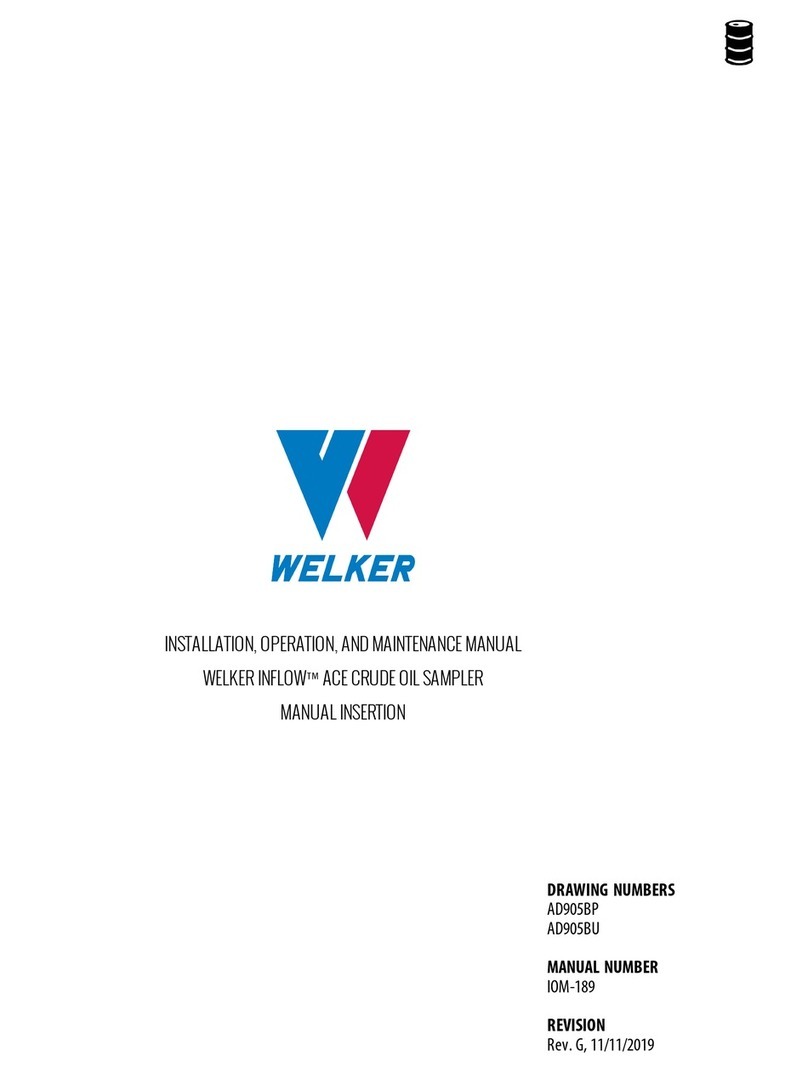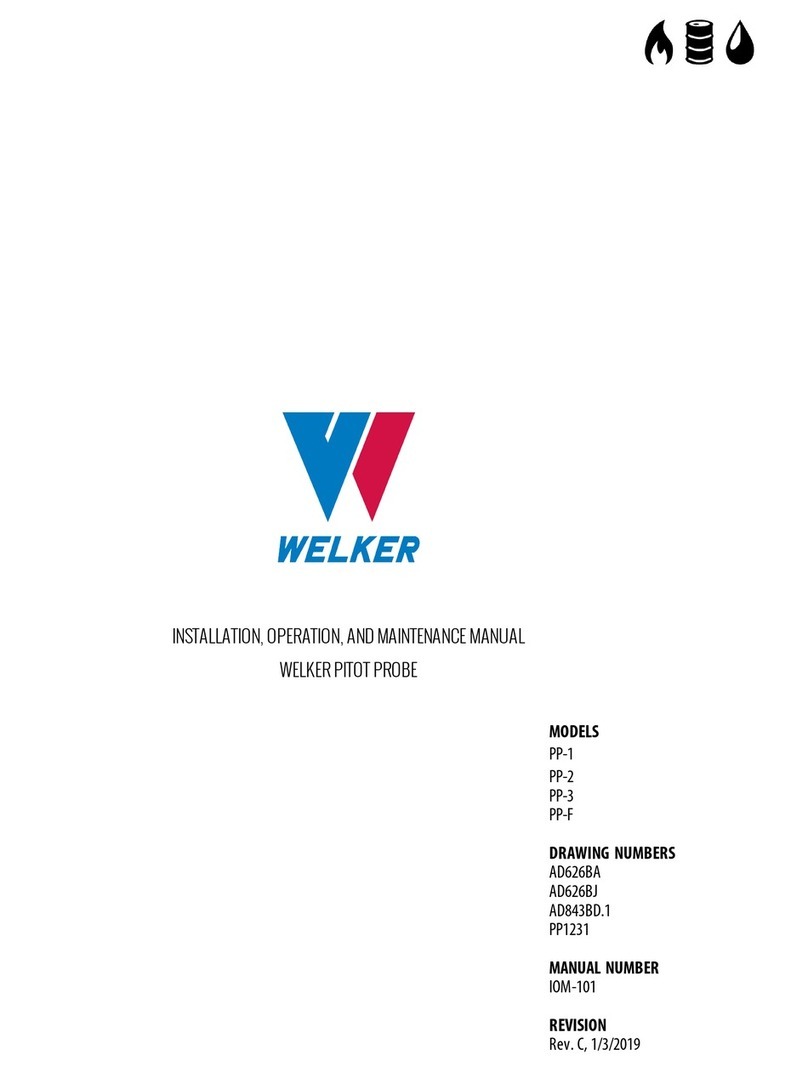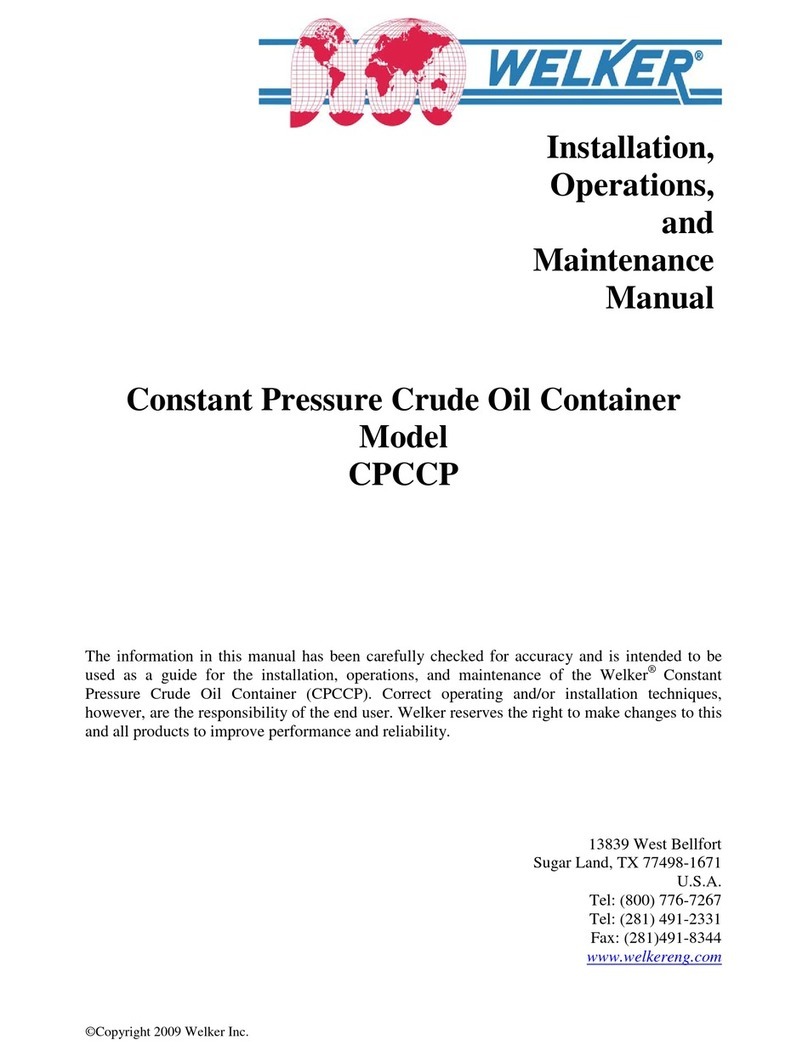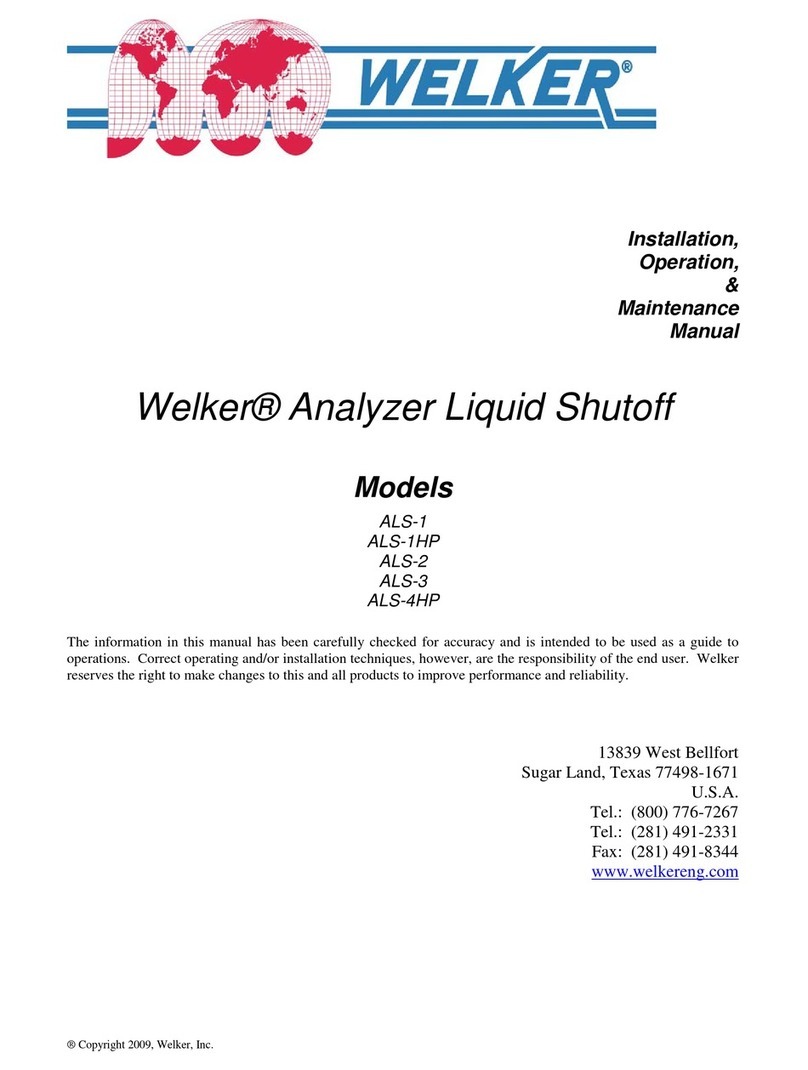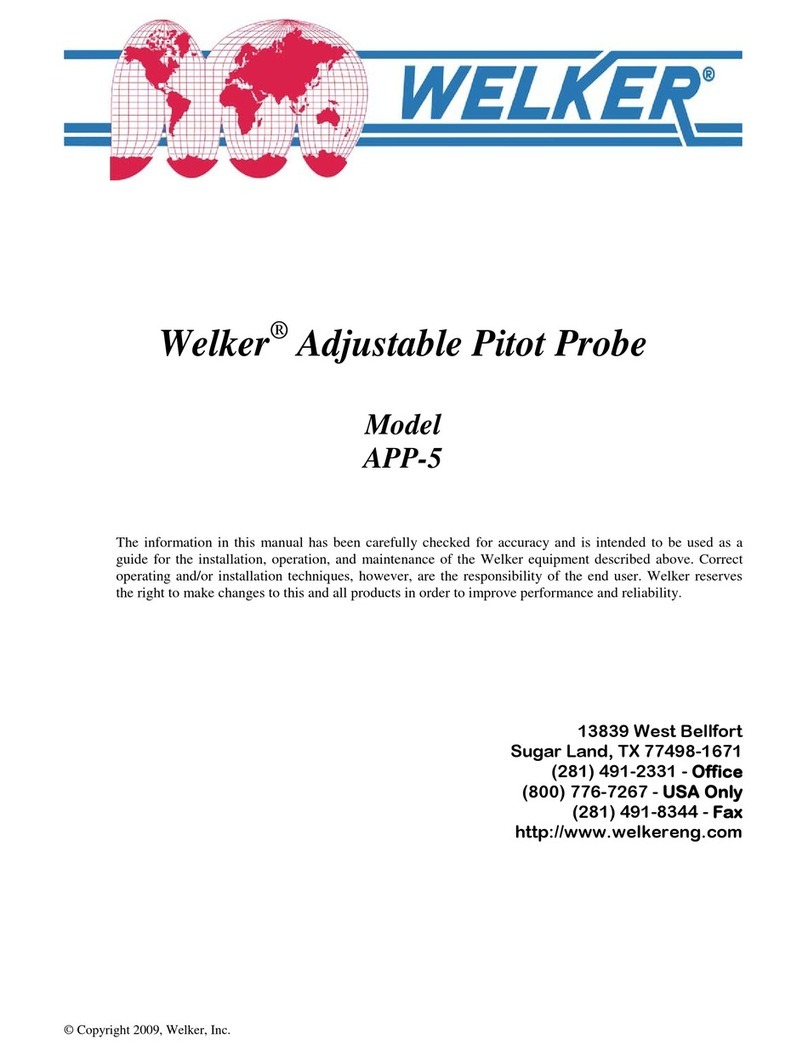
1.1 Introduction
We appreciate your business and your choice of Welker products. The installation, operation, and maintenance liability for this
equipment becomes that of the purchaser at the time of receipt. Reading the applicable Installation, Operation, and
Maintenance (IOM) Manuals prior to installation and operation of this equipment is required for a full understanding of its
application and performance prior to use.*
If you have any questions, please call Welker at 1-281-491-2331.
*The following procedures have been written for use with standard Welker parts and equipment. Assemblies that have been modified may have additional
requirements and specifications that are not listed in this manual.
1.2 Product Description
The Welker GSS-4PM Composite Gas Sampler is a self-purging positive displacement pump designed to extract samples from
the center one-third (¹⁄₃) of a pressurized gas pipeline and collect them in a connected sample cylinder.
The compact design of this probe mounted sampler eliminates long tubing runs and sample lag time. By minimizing the distance
between the product source and the collection head, the GSS-4PM ensures quality sample grabs. With every actuation, pressure
is applied to the Vanishing Chamber™ collection cup, collapsing the cup and fully displacing the trapped sample into the sample
cylinder.
The GSS-4PM can be connected to a customer Programmable Logic Controller (PLC) or other signal control system to operate the
solenoid. Alternatively, the GSS-4PM can be supplied with a Welker 4P Sample Frequency Controller or a Welker 6Tc
Timer/Controller, both of which are capable of operating the solenoid for timed or proportional to flow sampling.
In locations where the process gas is not clean and dry, the GSS-4PM can be configured for operation by an auxiliary instrument
air supply. For such locations, the Welker LE-2SSKO Probe Mounted Liquid Eliminator is recommended in place of the standard
probe, as it removes free liquids, condensed hydrocarbons, glycol, and amines from gas samples, thus ensuring the collection of
representative samples and protecting the sampler.
For this manual, the term "PLC," or Programmable Logic Controller, will be used to refer to the PLC, DCS, or other signal control
system used by the customer to activate and operate the solenoid.
Welker may custom design the GSS-4PM to suit the particular application and specifications of each customer.
SECTION 1: PRODUCTINFORMATION
4IOM-022 MODEL: GSS-4PM REV: F 13839 West Bellfort Street, Sugar Land, TX 77498 welker.com Service Department 281.491.2331












